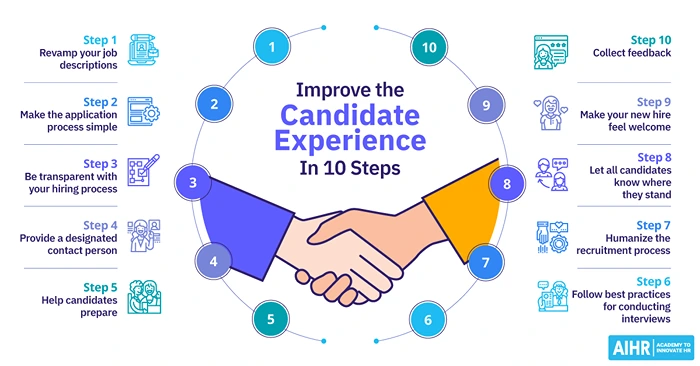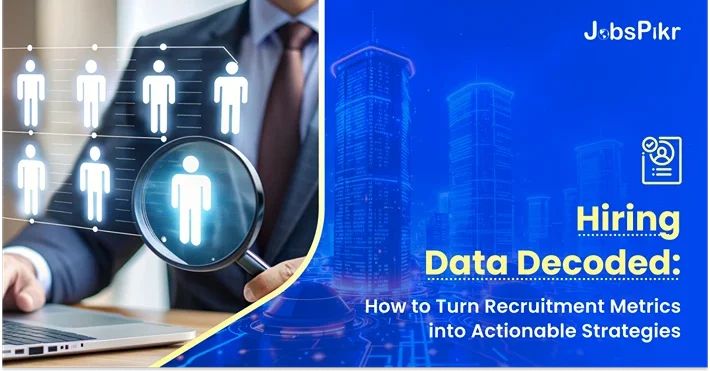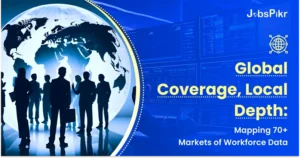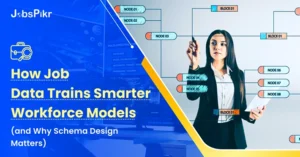- The Pivot: From Reactive Tool to Strategic Hiring Data
- Taming the Time-to-Fill Beast: Hiring Data Over Guesswork
- Cost-Per-Hire: From Black Hole to Transparent Investment
- Candidate Experience: Your Silent Brand Ambassador
- Diversity Metrics: From Buzzword to Accountability
- Making It Work: Beyond the Software Purchase
- Why Maturity Matters: The Cost of Standing Still
- The Bottom Line: Talent as a Strategic Weapon
For years, talent acquisition often felt like fighting a massive beast. Resumes piled up in inboxes, spreadsheets grew outdated by lunch, and hiring managers demanded status updates while candidates vanished into the void. The promise of early Applicant Tracking Systems (ATS)? Mostly digital shoeboxes for resumes. But today’s hiring data is different.
They’re not just storing CVs—they’re becoming the operational brain of talent strategy, fundamentally reshaping how companies tackle stubborn metrics like time-to-fill, bleed money through cost-per-hire, damage brands with poor candidate experience, and fumble diversity metrics. It’s a revolution in how organizations compete for people.

Image Source: Dataspace
The Pivot: From Reactive Tool to Strategic Hiring Data
Remember the “database” of the 2000s? Scanned resumes in PDF purgatory, keyword searches that missed obvious talent, and zero insight into why roles stayed open. Early ATS solutions added workflow but trapped data in functional silos.
Sourcing costs? Buried in finance spreadsheets. Interview feedback? Scattered across 37 emails. Diversity stats? Manually cobbled together for annual reports—if at all.
The modern hiring data explodes these limitations. Think of it as:
- A Unified Talent Ecosystem: Every touchpoint—application, interview note, assessment score, sourcing origin, decline reason—lives in one searchable, analyzable hub.
- A Relationship Engine: It’s not just active candidates. It’s past silver medalists, employee referrals, conference contacts, and niche community members—all nurtured over time.
- An Intelligence Platform: Moving beyond “how many hires?” to “which source yields the best engineers?” or “why do offers fail in Finance?”
- An Automation Workhorse: Killing repetitive tasks: screening, scheduling, status updates, and compliance checks.
- The Integration Hub: Seamlessly syncing with HRIS, payroll, background checks, skills assessments, and even external salary benchmarks.

Image Source: JobsPikr Workforce Development
This interconnectedness is the game-changer. Let’s dissect its impact on four critical pain points.
Taming the Time-to-Fill Beast: Hiring Data Over Guesswork
Time-to-fill (TTF) can be a pain for many organizations. When TTF balloons, projects stall, teams burn out, and revenue bleeds. Traditional fixes cannot be applied here. Modern databases attack root causes:
- Proactive Pools Beat Panic Sourcing: Instead of a frantic LinkedIn search on day one, recruiters mine hiring data for pre-vetted, engaged candidates from past searches or talent communities. One biotech firm slashed the niche research role TTF by 50% purely by reactivating past applicants.
- Source Channel Forensics: Gut feelings lie. Data reveals the truth. Which platform actually delivers viable manufacturing supervisors fastest? Is that premium job board worth 3x the cost for marginally quicker TTF? The database quantifies it.
- Bottleneck Surgery: Vague complaints about “slow hiring” become actionable. Dashboards pinpoint exact stages dragging down TTF: Is it HR screen lag? Hiring manager indecision? A 4-week background check? One SaaS company discovered that manager interview delays added 15 days to TTF—fixing that saved $380k/year in lost productivity.
- Intelligent Matching: AI tools (used ethically!) surface internal candidates or past applicants perfectly suited for new roles, cutting sourcing TTF to near zero.
- Collaboration, Not Chaos: Shared feedback scores, automated interviewer scheduling, and centralized comms prevent the “waiting on feedback” black hole.
Real Impact: Companies leveraging this strategically consistently report 25-40% reductions in time-to-fill. That’s months of productivity regained annually.
Cost-Per-Hire: From Black Hole to Transparent Investment
Calculating cost-per-hire (CPH) used to mean forensic accounting: agency fees here, job board spend there, vague estimates of internal hours. Results were often wrong and useless. Modern databases bring radical transparency:
- True Total Cost Capture: Every dollar spent integrates automatically: LinkedIn recruiter seats, Indeed contracts, agency fees paid through the system, assessment costs, even estimated internal recruiter time per hire (via workflow tracking). No more spreadsheets.
- ROI by Source, Not Just Resume: It’s not “We got 10 hires from Job Board X.” It’s “Job Board X cost $8,200 per engineer hire with a 24-month retention rate of 85%, while referrals cost $1,200 with 92% retention.” That’s strategic budgeting.
- Reducing Agency Dependence: Powerful CRM/search tools make rediscovering past candidates or proactively sourcing niche skills easier. One logistics firm cut agency CPH by 68% in 18 months by leveraging its rediscovered talent pool.
- Efficiency = Direct Savings: Automating screening for high-volume roles saves recruiters hours. Faster TTF reduces the hidden costs of vacancy (overtime, contractor fees, lost sales).
- Predictive Costing: Modeling CPH for a new role in Berlin? The database forecasts are based on historical data for similar roles, location adjustments, and planned sourcing mix.
Bottom Line: Data-driven decisions shift spend from high-CPH/low-retention sources to high-performing channels, optimizing every dollar spent on talent.
Candidate Experience: Your Silent Brand Ambassador

Image Source: AIHR
A clunky application, radio silence after an interview, or generic rejections damage your employer brand more than any negative Glassdoor review. In the talent economy, candidate experience is currency. Modern databases enable genuine relationship-building:
- One Profile, One Journey: Candidates hate repeating themselves. A centralized profile means recruiters, coordinators, and hiring managers see all interactions. No more “Didn’t you get my portfolio?”
- Communication That Doesn’t Stink: Automated but personalized updates (SMS, email) keep candidates feeling valued. Status changes? The system triggers a note. CRM flags let recruiters send relevant content: “Saw you worked with Python—here’s a blog from our dev team.”
- Self-Service Power: Letting candidates self-schedule interviews from integrated calendar links (e.g., Calendly sync) shows respect for their time. Mobile-optimized apply flows boost completion rates.
- Feedback That’s Actually Useful: Enforced structured interview forms force specificity. Rejecting a candidate? The database equips recruiters to share constructive feedback based on role criteria, not gut feel. “Your cloud architecture skills were strong, but we needed deeper Kubernetes experience for this specific role,” builds goodwill.
- Nurturing the 99%: The gold? Treating declined candidates as future talent. The database CRM allows targeted, low-touch nurturing: sharing company news, inviting to webinars, and checking in quarterly. When that perfect role opens, they’re warm leads, not cold calls.
The Payoff: Positive candidate experience directly boosts offer acceptance rates, turns rejects into referrals, and builds a talent pipeline that reduces future sourcing CPH. It’s marketing you can’t buy.
Diversity Metrics: From Buzzword to Accountability
Goodwill DEI statements ring hollow without action. Real progress demands rigorous measurement, not annual headcount snapshots. Modern hiring data enables ethical, impactful tracking of diversity metrics:
- Consistent, Voluntary Self-ID: Secure, anonymized collection at application (and post-hire) using standardized EEOC categories, with clear opt-in/usage transparency. Trust is key.
- Funnel Analytics That Expose Bias: Where do diverse candidates fall off?
- Application → Screen: Are underrepresented groups filtered out by flawed keyword searches?
- Screen → Interview: Are biases creeping into resume reviews?
- Interview → Offer: Are hiring panels scoring consistently?
- Offer → Acceptance: Are equitable offers being extended?
The database exposes these leaks.
- Sourcing Effectiveness: Quantifying which channels (HBCU partnerships, Women in Tech events, specific job boards) actually deliver diverse and qualified applicants informs budget decisions.
- Structured Interviews = Fairer Outcomes: Mandated role-specific competencies and anchored rating scales (stored in the database) reduce subjective “culture fit” bias. Analyzing anonymized feedback scores by demographic group highlights rater training needs.
- Goals ≠ Guesses: Setting specific, measurable representation targets for leadership roles? The database tracks progress in real-time, fostering accountability.
- Ethical Guardrails: Reputable platforms prioritize GDPR/CCPA compliance, anonymized reporting, and audit trails. Data informs systemic change, never individual hiring decisions.
The Shift: This moves DEI from PR to performance management. You can’t fix what you don’t measure. Robust diversity metrics reveal where interventions (sourcing, training, process tweaks) are needed.
Making It Work: Beyond the Software Purchase
Buying the tool is step one. Maximizing value demands strategy:
- Define Your North Star: Is crushing TTF for sales roles the priority? Slashing agency CPH? Improving candidate NPS? Boosting underrepresented group hires in tech? Align configuration and reporting to specific goals.
- Data Quality is Non-Negotiable: Inconsistent job codes, messy location data, or unchecked duplicate records cripple insights. Clean hiring data weekly. Enforce entry standards ruthlessly.
- Configure for Reality, Not Fantasy: Don’t replicate your broken 12-stage interview process digitally. Use implementation to streamline. Force hard conversations about necessary steps.
- Integrate or Suffer: If your hiring database doesn’t talk to your HRIS, assessment tools, and email, you’re building new silos. Prioritize key integrations.
- Train Humans, Not Just Users: Recruiters need “why” training: *”This search saves you 2 hours/day.”* Hiring managers need simplicity: “Click here to submit feedback.” Address change resistance head-on.
- Embrace Analytics Expertise: Basic reports aren’t enough. Hire or train someone who can interrogate data: “Why does Source Y have high CPH but also the highest retention?”
- Iterate Relentlessly: Review core metrics (TTF, CPH, Experience Scores, Diversity Funnel Health) quarterly. Did TTF creep up? Use the data to diagnose why. Adapt.
Maturity Path:
Level 1 (Chaos): Database = resume dump. Manual everything.
- Database Reality: A glorified storage drive. Resumes dumped into folders (digital/physical). No search functionality beyond basic filenames.
- Workflow Nightmares:
- Recruiters manually sift through 100s of PDFs/emails per role.
- Hiring managers “wing it” with personal spreadsheets for candidate tracking.
- Zero version control: Duplicate resumes, lost updates, conflicting feedback.
- Metric Blind Spots:
- Time-to-fill tracked via calendar guesstimates.
- Cost-per-hire is calculated annually via finance audits (ignoring internal labor).
- Diversity metrics: Uncollected or scribbled in margin notes.
- Candidate Experience Impact:
- Applications vanish into black holes.
- Candidates resubmit materials repeatedly.
- No status updates; radio silence post-interview.
Business Cost: High recruiter burnout, toxic employer brand reputation, liability from inconsistent hiring practices.
Level 2 (Reactive): Basic workflow. Tracking TTF/CPH. Sourcing analytics 101.
- Database Reality: Basic ATS functionality. Job posts → Applications → Stages → Hires. Limited reporting.
- Workflow Progress:
- Standardized stages (e.g., “HR Screen → Hiring Manager Review”).
- Automated rejection emails.
- Resume parsing + keyword search.
- Metric Limitations:
- Time-to-fill: Measured but not diagnosed (“Role X took 45 days!” Why? Unknown).
- Cost-per-hire: Captures external costs (job boards/agencies) but ignores internal hours.
- Diversity metrics: Collected via voluntary surveys but rarely analyzed.
- Candidate Experience Improvements:
- Application confirmations are auto-sent.
- Status is visible in candidate portals.
- Rejection templates (but still impersonal)
- Hidden Gaps:
- Data silos: Sourcing costs live in accounting software; feedback in email.
- “Silver medalist” candidates forgotten post-rejection.
- Hiring managers bypass the system (“Just email me the resumes!”).
Level 3 (Strategic): Predictive analytics. Active talent pools. Source ROI clarity. DEI funnel metrics.
- Database Reality: Unified platform with CRM, analytics, and ecosystem integrations (HRIS, assessments, onboarding).
- Workflow Breakthroughs:
- AI Matching: Suggests past applicants/internal talent for new roles.
- Automated Nurturing: Drip campaigns to talent pools based on skills/engagement.
- Structured DEI: Anonymized screening, bias-alert tools in feedback forms.
- Metric Mastery:
- Time-to-fill: Diagnosed by stage bottlenecks (e.g., “Manager interviews add 12 days”).
- Cost-per-hire: True ROI by source (e.g., “Referrals = $1.2k/hire | Agency = $8k/hire”).
- Diversity metrics: Funnel analysis (e.g., “Female applicants drop 40% at technical screen”).
- Candidate Experience Elevation:
- Personalized SMS/email journeys.
- Self-scheduling interviews + feedback transparency.
- Talent community portals with exclusive content.
- Strategic Outputs:
- Forecasted hiring demand by department/geo.
- Skills gap analysis against business goals.
- Retention risk scoring for internal mobility.
Level 4 (Predictive): AI-driven talent forecasting. Seamless lifecycle data. Proactive retention/DEI alerts.
- Database Reality: AI-native platform. Unified data from hire to retire. External market intelligence integrated.
- Workflow Revolution:
- Predictive Sourcing: “Source candidates for Role X in Berlin 90 days pre-requisition.”
- Auto-Optimization: System suggests process tweaks (e.g., “Reduce interviews from 5→3 for DevOps roles”).
- DEI Prescriptions: “Partner with HBCU Y to boost Black engineer pipeline by 25%.”
- Metric Foresight:
- Time-to-fill: Forecasted based on market scarcity + internal capacity.
- Cost-per-hire: Simulated impact of economic shifts (e.g., “Recession will cut CPH by 18%”).
- Diversity metrics: Predictive modeling of representation gaps 2–3 years ahead.
- Candidate & Employee Experience:
- Hyper-personalized career pathing (e.g., “Based on your skills, consider ML certification → Promotion in 8 mos”).
- Real-time flight risk alerts to managers + preemptive retention offers.
- Business Impact:
- Talent strategy directly fuels M&A, market expansion, and product innovation.
- TA function seen as revenue driver (e.g., “Filling IoT roles 30 days faster accelerated product launch → $2M revenue”).
Why Maturity Matters: The Cost of Standing Still
Organizations stuck at Level 1-2:
- Waste 30–40% of recruiter time on manual tasks.
- Incur 50 %+ higher cost-per-hire due to agency overreliance.
- Suffer 2–3× longer time-to-fill for critical roles.
- Face DEI backlash from unaddressed funnel leaks.
Level 3-4 adopters:
- Reduce time-to-fill by 35 %+ via predictive pipelining.
- Slash cost-per-hire by optimizing source mix (e.g., scaling high-ROI employee referrals).
- Boost offer acceptance rates by 20% through personalized candidate journeys.
- Achieve 90 %+ DEI hiring goals via data-driven interventions.
The Bottom Line: Talent as a Strategic Weapon
Modern hiring data from platforms like JobsPikr transforms TA from a cost center to a competitive accelerator. They provide the hard evidence to:
- Shorten time-to-fill with precision, not guesswork.
- Optimize cost-per-hire by investing in channels that deliver quality, not just resumes.
- Elevate candidate experience into a tangible brand differentiator.
- Anchor DEI in data-driven action via transparent diversity metrics.
This isn’t just better software. It’s the foundation for building a workforce that out-executes the competition.

If you’re curious to try JobsPikr and see how it aligns with your business, sign up for a free trial today.




